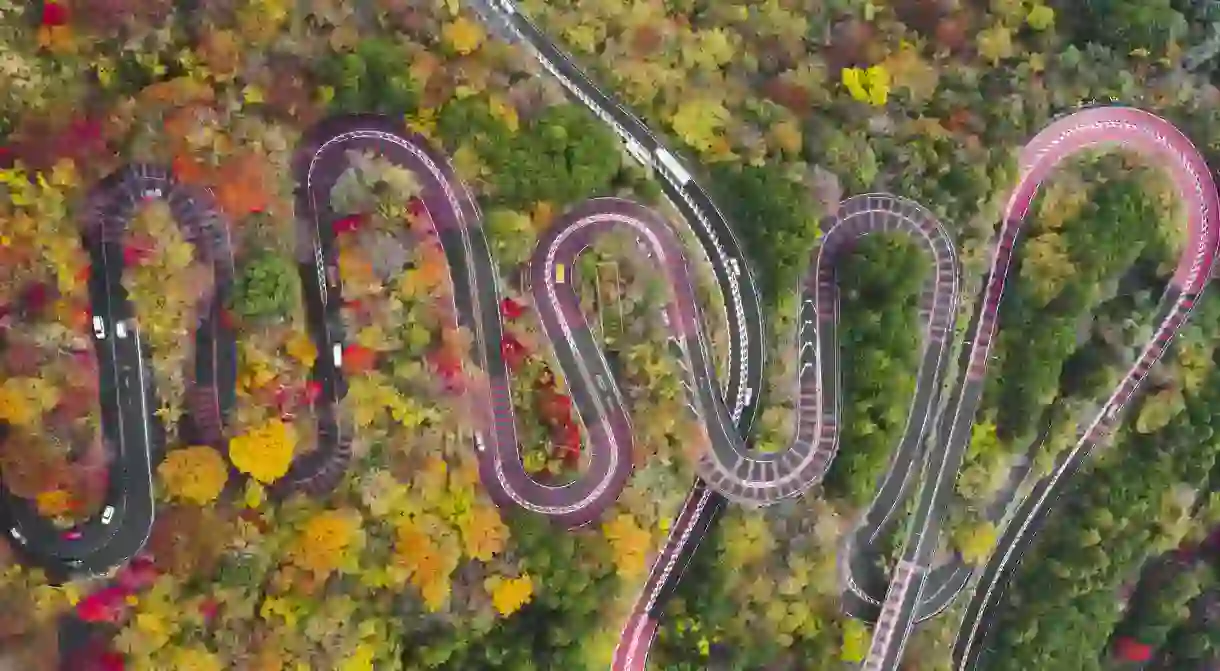From Volcanoes to Waterfalls: Natural Attractions in Hakone, Japan

Hakone is an area of spectacular natural beauty, accounting for a large portion of Fuji-Hakone-Izu National Park. Here, discover the most spectacular natural attractions and outdoor activities in this mountainous region.
Hakone’s topography is as beautiful as it is diverse. In the north, fields of golden pampas grass climb the hills of Sengokuhara, while the geothermal Ōwakudani simmers at the region’s core and the serene Lake Ashi encompasses much of Hakone’s western border. To experience Hakone in all its scenic beauty, book a ticket for the Hakone Ropeway or the Hakone Tozan Railway. The former soars over the volcanic valley of Ōwakudani, while the latter takes passengers through dense woodland between Gora and Hakone-Yumoto.
Sengokuhara Susuki Grass Fields
Natural Feature

One of Hakone’s most photogenic natural spots can be found in the northern region of Sengokuhara. Blanketing the hills at the base of Mount Hakone are tussocks of tall pampas grass, a sight uniquely beautiful in the autumn months, when the grass turns golden. A walking path cuts through the centre of the field, allowing visitors to wander through the swaying leaves and take in views over the golden hills. During the summer months, the grass is a brilliant green, but it’s generally not advised to visit during the spring when the field is cleared for regrowth.
Ōwakudani
Natural Feature

At the heart of Hakone is Ōwakudani, a sweeping geothermal valley created by the eruption of the Hakone volcano 3,000 years ago. On a clear day, those hiking around the valley can take in views of Mount Fuji, while from the Hakone Ropeway, bubbling hot springs and clouds of white smoke can be seen drifting over the crater. Many visitors make the journey to Ōwakudani to try the region’s special black eggs, hard-boiled in natural sulfurous hot springs. It’s believed that eating one of the eggs will prolong your life for seven years.
Hakone Shrine and Lake Ashi
Shinto Shrine

Concealed by woodland near the shoreline of Lake Ashi is the region’s main Shinto shrine, marked out by a red torii gate that famously rises out of the water. The image of the gate, which frames the tranquil Lake Ashi and mountains beyond, is a recognisable symbol of the union between Japan’s natural beauty and sacred sites. As such, many visitors to Hakone flock here to take that perfect picture, though for a shot of the floating gate against the forest and snowy peak of Mt Fuji, it’s best to head to the opposite side of the lake.
Hakone Open-Air Museum
Museum, Park

Hakone Gora Park
Park

Every season puts on a show in Gora Park, a French-style landscape park that ascends the slopes of Gora. Spring brings bright azaleas and pale pink cherry blossoms, while in summer, the park’s central fountain is surrounded by blossoming hydrangeas, before autumn’s blaze of red and orange maple leaves give way to snow and Christmas lights in the winter. The park, Japan’s first French-style landscape garden, offers a peaceful retreat no matter what time of year you visit. When not stopping to smell the roses, guests can enjoy workshops that include glassblowing, flower-arranging and pottery-making.
Chisuji Falls
Natural Feature

Streaming down a 20-metre-wide (66-feet-wide) stretch of moss-covered rock, the majestic Chisuji Falls form the basis of many hikes through the forest of Hakone’s Kowakudani region. Summer evenings bring a flock of genji fireflies to the area, while in the autumn, the surrounding maple trees transform the forest into a blaze of colour. Walking trails here are suited for a gentle, pleasant stroll, so if you’re looking for a challenging climb, this isn’t the hike for you.













